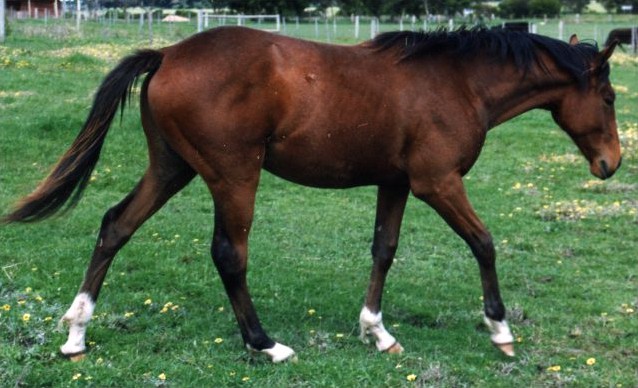Type the name of the breed you're looking for below
[wpdreams_ajaxsearchlite] Don't see the breed your're looking for? Click here and let us know!
Australian Stock horse
| Country Of Origin | Australia |
| History and Background | The roots of the Australian Stock Horse date back to the earliest importation of nine horses to Australia, with the arrival of the First Fleet in Botany Bay in January, 1788. Some of the original horse breeds in these early imports included the Thoroughbred, Cape of Good Hope Horse (largely descended from the Barb and Spanish horse), Arabian, Timor Pony and Welsh Mountain pony. Horses in Australia were bred for their stamina and strength, with weaker animals culled and only the strongest allowed to breed on. In the 1830s, additional Thoroughbreds were imported into Australia to improve the local strains, and the mid-20th century saw infusions from the American Quarter Horse. The Australian Stock Horse and the Waler horse come from similar roots, though today they are separate breeds. The "station horse" that was an ancestor of both breeds was used by the Australian Army in the First World War and was renowned for its toughness and endurance. However, the modern Australian Stock Horse differs from the Waler horse in that it is not as big. The horses shipped abroad to fight in war and kept at home to be bred on as Walers were the larger animals, as they were required to carry a rider with the considerable extra weight of weapons and a full pack. Some of the heaviest animals were also required pull water carts and carriages. However, the characteristics of toughness and endurance remain with the Australian Stock Horse of today. Formal recognition of Australian Stock Horses as a distinct breed began in June 1971 when over 100 camp drafters and horse breeders met in Tamworth, New South Wales, to form the Australian Stock Horse Society. Many of these people bred stock horses using bloodlines tracing back to native stock, along with some Arabians, Thoroughbreds, and a few ponies of outstanding merit. Most of the early ASH registrations were of horses bred with bloodlines that excelled at both camp drafting and cattle work in the rugged Great Dividing Range. Initially, horses were inspected for registration by three classifiers who assessed them for conformation, breeding and athletic ability. The best were accepted for inclusion in the Stud Book, some were approved for the registry appendix, and those not meeting the criteria for registration were rejected. Fourteen specific foundation sires are responsible for most of the bloodlines accepted into the Society Australia-wide and most well-bred Australian Stock Horses trace to one of these foundation sires. These included horses bred from colonial stock: Saladin, Cecil and his son Radium, Medlow and Bobbie Bruce. The others were Thoroughbreds: Rivoli, Commandant, Panzer, Midstream, Young Valais, Gibbergunyah, Bushfire, Silvius and Deo Juvante also exerted considerable influence. Since then Rivoli Ray, Blue Moon Mystic, Eliotts Creek Cadet, Warrenbri Romeo and some American Quarter Horses have also had a large influence on the breed. The use of Quarter Horse bloodlines is somewhat controversial, with some breeders preferring to stay with older lines. Those who wish to bring in outside blood are required to pay very high fees to the Society, thus providing an incentive for breeders to only bring in worthwhile horses. |
| Use Today | Show horses, Herding horses, Cavalry horses |
| Height | 14.2 and 16 hands high (56-64 inches, 142-162 centimeters) |
| Colour | All solid colours. |
| Characteristics | The Australian Stock Horse is bred for intelligence, courage, toughness and stamina. The horse will be sound, agile and quick moving with a sure-footed walk. It will have a calm, responsive temperament. All colours are acceptable. The ideal Australian Stock Horse is well proportioned in all respects according to its size. Desired traits include a finely cut, expressive head with large eye and a broad forehead. The neck is long, arched, with head well set on. The withers should be well defined. Overall conformation is well-muscled but not bulky, with correct conformation that includes a deep chest, well-sprung ribs, strong and broad back, and powerful hindquarters. The hooves are hard and well-conformed. |
| Personality and Temperament | The Australian Stock Horse is a docile creature and very reliable, making it especially suitable for work and sports activities. |



